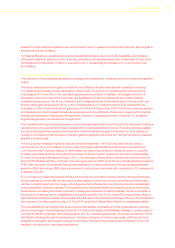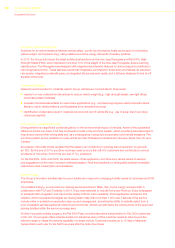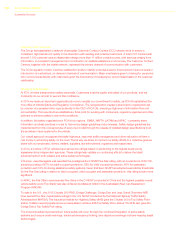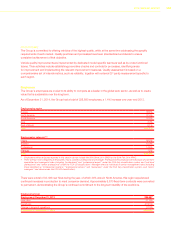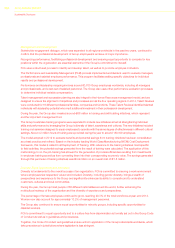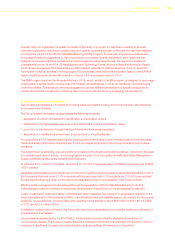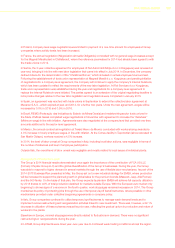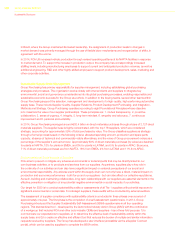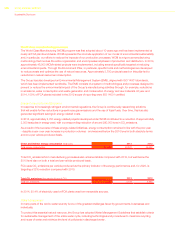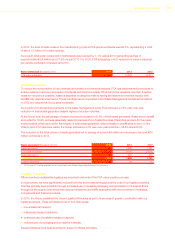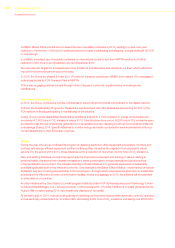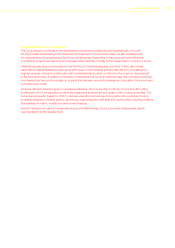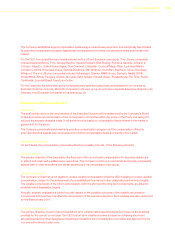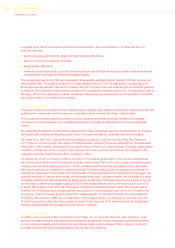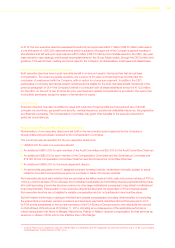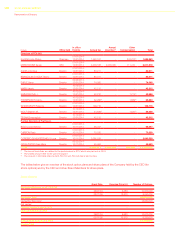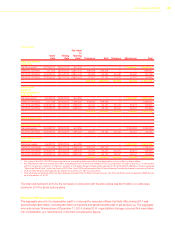Chrysler 2014 Annual Report Download - page 131
Download and view the complete annual report
Please find page 131 of the 2014 Chrysler annual report below. You can navigate through the pages in the report by either clicking on the pages listed below, or by using the keyword search tool below to find specific information within the annual report.
2014 | ANNUAL REPORT 129
The questionnaire covers environmental, labor practice, human rights, compliance, ethics, diversity, and health and
safety criteria. During 2014, it was expanded with an increased emphasis on water and environmental stewardship.
The results of the self-assessment are used to create a risk map for the purpose of identifying any suppliers that may
be at risk and, therefore, require further investigation.
On-site Supplier Audits may be conducted by either FCA Supplier Quality Engineers (SQE) or external auditors. If any
critical issues are identified during an audit, a supplier may be placed on watch status or, in particularly severe cases,
the relationship with the supplier may be suspended or terminated. Where areas for improvement are identified, a plan
of corrective actions may be developed with the supplier concerned. Each action plan sets out specific responsibilities
within the supplier’s organization, activities and deadlines for implementation.
In addition to the existing monitoring programs, the Group has also adopted models of consultation and collaboration
with suppliers based on effective, interactive communication processes. Initiatives such as local seminars, discussion
forums and training programs have been developed over the years to facilitate the exchange of ideas and knowledge
and to increase the level of collaboration.
On the environmental front, for example, suppliers are encouraged to develop internal policies and guidelines and to
adopt a certified environmental management system. As part of the Group’s 2020 target to monitor CO2 emissions
of at least 90% of our top suppliers, we are continuing to support suppliers in addressing climate change issues,
including reducing greenhouse gas emissions.
In 2014, selected suppliers were invited to participate in CDP’s supply chain program. The 88 suppliers that disclosed
(out of 126 invited) achieved a score of 65/100 for transparency in disclosure and placed in the C performance band
for commitment toward reducing carbon emissions. The results revealed that measures implemented by these
suppliers had yielded a 62 million ton reduction in CO2 equivalent emissions. The Group has also initiated a series of
consultations with several strategic suppliers on monitoring water management within the supply chain and, over the
next few years, developing a joint water stewardship strategy in water-stressed areas.
Another important area of long-term focus for the Group, in collaboration with industry peers and stakeholders, is
the respect of human rights and working conditions at all levels in the supply chain. In-depth training on responsible
working conditions is offered to suppliers in partnership with AIAG. Developed in collaboration with other automakers,
the training is designed to help assure and protect the rights and dignity of the workers who make vehicle
components. We are also committed to promoting entrepreneurial growth by providing entrepreneurs the practical
capacity-building training they need to achieve a higher level of sustainability.
In addition, the Group encourages supplier innovation through various initiatives focused on cost reduction. The
Technical Cost Reduction SUPER (SUpplier Product Enhancement Reward) Program, for example, encourages
suppliers to be proactive by sharing the economic benefits generated through proposals for innovative manufacturing
technologies and leaner component design. During 2014, approximately 300 ideas were implemented by suppliers in
NAFTA, EMEA and LATAM regions, allowing to share economic benefits for approximately €43 million.
Reducing the environmental impact of manufacturing and non-manufacturing processes
FCA is fully committed to minimizing the impact of our activities on the environment in all areas from manufacturing
processes to logistics, dealerships and commercial and administrative offices. Efforts to reduce our environmental
footprint and continuously improve environmental performance are an integral part of the Group’s overall industrial
strategy.
A recent example of this commitment is the new Jeep plant in Pernambuco, Brazil, where FCA is dedicating the
maximum know-how and resources to make it the Group’s most technologically-advanced and sustainable plant in
the world.


